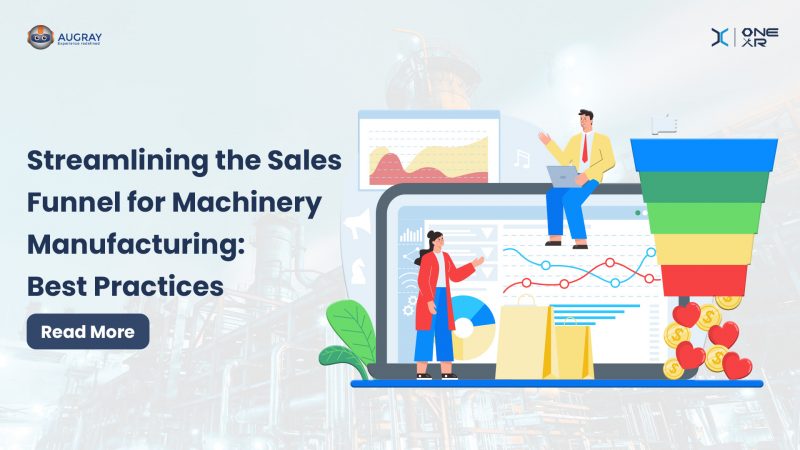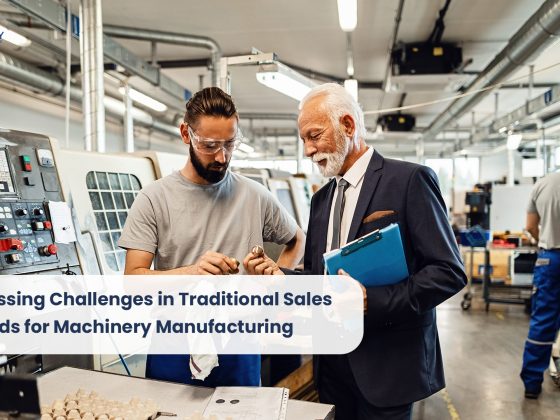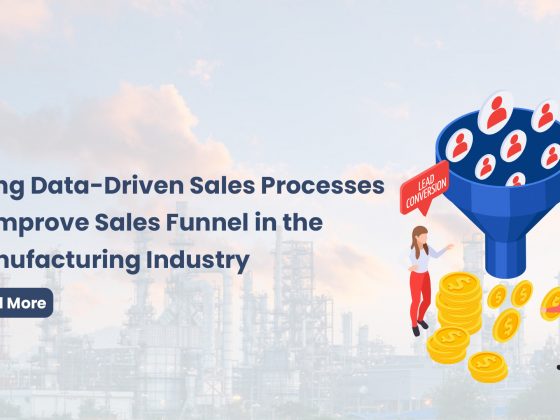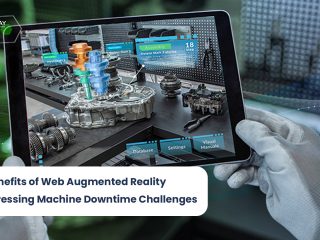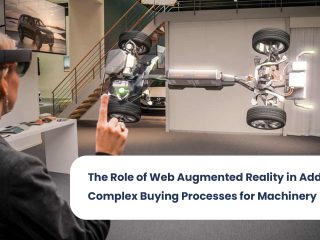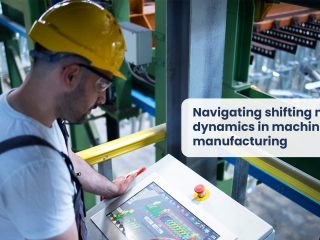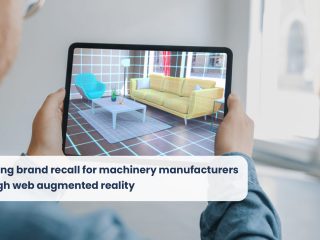Streamlining the sales funnel is a crucial task for any business, including machinery manufacturing companies. The sales funnel is the process by which a potential customer becomes a paying customer. However, the traditional sales funnel has undergone many changes over the years, and with the advent of technology, new best practices have emerged.
One of these emerging technologies is extended reality (XR). XR is a term that encompasses a variety of immersive technologies, including virtual reality (VR), augmented reality (AR), and mixed reality (MR). This blog will discuss how machinery manufacturing companies can use XR to streamline t`heir sales funnel and improve the customer experience.
Advantages of XR in Streamlining the Sales Funnel:
- Improved Visualization: One of the main advantages of XR is its ability to provide an immersive and interactive experience. Machinery manufacturing companies can use XR to provide customers with a 360-degree view of their products, allowing them to visualize the products in a more realistic way. This can help customers make more informed purchasing decisions.
- Enhanced Engagement: XR can help increase customer engagement and reduce the bounce rate on websites. By using interactive and immersive experiences, machinery manufacturing companies can keep potential customers engaged for longer periods of time, increasing the likelihood that they will convert into paying customers.
- Improved Personalization: XR can be used to provide personalized experiences for potential customers. For example, AR can be used to overlay product information and specifications onto real-world objects, while VR can be used to provide virtual tours of manufacturing facilities. These personalized experiences can help build trust and establish a relationship with customers.
Problems in Implementing XR in the Sales Funnel:
- Cost: Implementing XR technology can be expensive, especially for small and medium-sized machinery manufacturing companies. This can be a barrier to entry for some companies, and may require significant investment in hardware, software, and personnel.
- Integration: Integrating XR technology into the sales funnel can be a complex process, requiring collaboration between various departments such as sales, marketing, and IT. This can be challenging, especially for companies with limited resources.
- Limited Availability: While XR technology has become more accessible in recent years, it is still not widely available to the general public. This can limit the reach of XR experiences, especially for companies targeting a broad audience.
Solutions to Implementing XR in the Sales Funnel:
- Start Small: Companies can start small by implementing XR technology in a single area, such as providing 3D models of their products on their website. This can help build a foundation for more extensive XR experiences in the future.
- Use Third-Party Providers: Companies can use third-party providers to develop and implement XR experiences. This can reduce the costs and complexity of implementing XR technology, while still providing high-quality experiences.
- Collaborate Across Departments: Companies can collaborate across departments to integrate XR technology into the sales funnel. This can help ensure that the technology is used effectively and efficiently, and that it meets the needs of all stakeholders.
Best Practices to Streamline the Sales Funnel:
- Identify the Right Target Market: To streamline the sales funnel, machinery manufacturers need to identify the right target market. This involves identifying the industries, businesses, and individuals that are most likely to be interested in their products and services.
- Create Buyer Personas: Creating buyer personas is essential to understanding the needs and pain points of potential customers. This enables machinery manufacturers to tailor their marketing messages and sales pitches to the specific needs of each customer.
- Develop a Content Marketing Strategy: Developing a content marketing strategy that provides valuable information to potential customers is essential to generating leads and nurturing them through the sales funnel. This can include blog posts, whitepapers, eBooks, and webinars.
- Focus on Lead Nurturing: Lead nurturing is a process that involves engaging with potential customers and providing them with valuable information and resources to build trust and establish a relationship. This can involve sending personalized emails, offering free trials or demos, or providing educational content.
- Align Sales and Marketing: Aligning sales and marketing is crucial to streamlining the sales funnel. This involves ensuring that both teams are working towards the same goals and using the same terminology and messaging. This can be done by setting up regular meetings and sharing data and insights.
- Measure and Analyze Results: Measuring and analyzing the results of the sales funnel is essential to identifying areas for improvement and optimizing the process. This can involve tracking metrics such as lead conversion rates, sales cycle length, and customer lifetime value.
Instances of Using XR to Streamline the Sales Funnel:
- Volvo: Volvo, a leading manufacturer of construction equipment, uses AR to provide customers with an interactive and immersive experience. The company’s AR app allows customers to view their products in 3D and overlay product information onto real-world objects.
- Caterpillar Inc: Caterpillar Inc, a manufacturer of construction and mining equipment, uses VR to provide virtual tours of their manufacturing facilities. This allows potential customers to experience the manufacturing process in a more immersive way and gain a deeper understanding of the company’s products and services.
- Liebherr: Liebherr, a manufacturer of cranes and other heavy equipment, uses VR to provide training for their customers. The company’s VR training simulations allow customers to practice operating their products in a safe and controlled environment, which can help reduce the risk of accidents and improve productivity.
- Komatsu: Komatsu, a manufacturer of construction equipment, uses AR to provide customers with an interactive experience. The company’s AR app allows customers to view their products in 3D and overlay product information onto real-world objects, such as construction sites. This can help customers visualize how the products will perform in real-world situations.
- Siemens: Siemens, a manufacturer of industrial machinery and equipment, uses VR to provide virtual training for their customers. The company’s VR simulations allow customers to practice operating their products in a simulated environment, which can help reduce the risk of accidents and improve productivity.
Conclusion:
XR technology has the potential to revolutionize the way that machinery manufacturing companies streamline their sales funnel. By providing immersive and interactive experiences, XR technology can help improve visualization, engagement, and personalization.
However, there are also challenges associated with implementing XR technology, including cost, integration, and limited availability.
By starting small, using third-party providers, and collaborating across departments, machinery manufacturing companies can overcome these challenges and leverage XR technology to improve their sales funnel.
With successful implementation, companies can differentiate themselves from competitors and build stronger relationships with customers, ultimately leading to increased sales and profitability.
